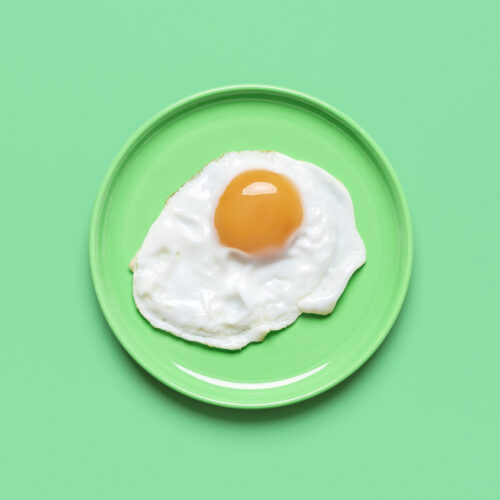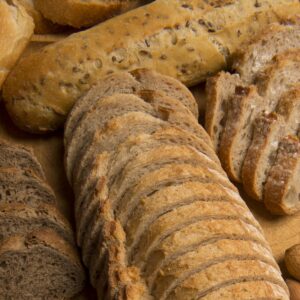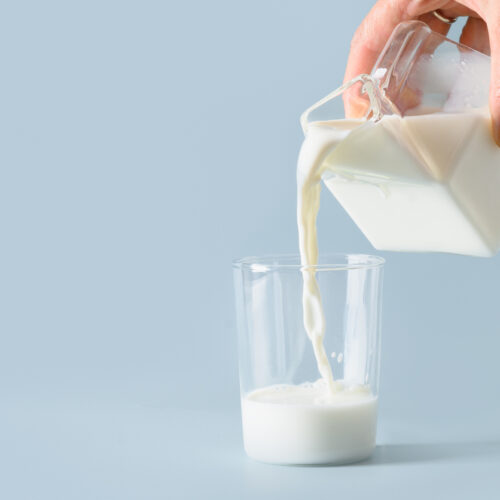
Research shows that popping vitamin and mineral supplements isn’t necessary if you’re eating a healthy diet — yet many of us are lacking in specific nutrients. Nutritionist Juliette Kellow and HFG senior nutritionist Rose Carr reveal whether you are at risk of a deficiency and how to address it.
The tide has turned against the obsession with popping vitamins and minerals as a shortcut to boosting health. A 2014 study investigating the link between supplements and health looked at the results of 27 trials, which included more than 400,000 adults, and concluded that if you’re not low in a certain nutrient, there is no benefit to taking supplements to lower your risk of heart disease or cancer, or to live longer. But here’s the problem: according to New Zealand’s national nutrition surveys for adults and children, many of us aren’t getting enough of all the nutrients we need from our diet.
The Ministry of Health specifies the amounts of a range of vitamins and minerals needed by New Zealand men, women and children. These amounts are based on providing enough, or more than enough, of a specific nutrient for most people in each age/gender group. For some they are recommended dietary intakes (RDIs); for some where an RDI can’t be determined there is an adequate intake (AI); and in addition to these, for some there is a suggested dietary target (SDT) which is higher than the RDI or AI. The SDT is based on amounts known to help reduce our risk for chronic disease. There are also recommendations for upper levels of intake (UL) for some vitamins and minerals which can be toxic if taken at high amounts.
Here’s how to increase your intake of the nutrients your family could be low on.
Vitamin A
Who’s missing out?
Most children are doing OK but four per cent of Pacifica children and 13 per cent of Maori boys have low intakes of vitamin A. However, 12 per cent of women and 23 per cent of men (15 years and older) also have inadequate intakes. Our 15-18 year olds have especially low intakes (27 per cent women, 38 per cent men) and 31 per cent of 51-70 year old men have low intakes. That’s compared to the RDI — the SDT is even higher!
Important for
Reproduction, immunity, growth in children, vision in dim light and keeping the skin and linings of body parts, such as the nose, healthy.
Find it in
- Animal form (retinol): Whole milk, cheese, eggs, some table spreads, liver and oil-rich fish.
- Plant form (beta-carotene): Orange, red, yellow and green vegetables and fruit such as carrots, kumara, pumpkin, mango, orange-fleshed melon, spinach, watercress, Brussels sprouts and red capsicums.
Boost your intake
- Use kumara instead of potatoes: bake or make wedges
- Breakfast with eggs
- Eat red capsicums — they have 14 times more beta-carotene than the green variety
- Stir-fry red capsicums, carrots, broccoli, spring onions and kale
- Swap tortilla chips and crisps for carrot and red capsicum sticks
- Eat canned mackerel — it contains more vitamin A than most other oil-rich fish
- Eat fresh apricots when in season
Vitamin D
Who’s missing out?
Around five per cent of adults have a vitamin D deficiency and another 27 per cent have levels below the recommendation. People with naturally very dark skin, and people not regularly exposed to sunlight, such as people who are housebound or who cover up completely in clothing are at the greatest risk of low vitamin D as we make most of our vitamin D from the action of sunlight on the skin. Living in the South Island is also a risk factor.
Important for
Helping the body to absorb calcium, meaning it’s essential for healthy bones and teeth.
Find it in
Sunlight (the main source. Safe exposure varies from summer to winter and for young and old.) It’s found in only a few foods: oil-rich fish is the best source but it’s also found in milk, eggs, liver and fortified foods such as table spreads and some dairy products.
Boost your intake
- Add salmon to fish pies
- Serve scrambled eggs with smoked salmon for brunch
- Make a salad niçoise: top lettuce, tomatoes, green beans, new potatoes and a few olives with a hard-boiled egg and tuna
- Make fishcakes using salmon or canned tuna with white fish and mashed potato
Iodine
Who’s missing out?
Overall, the iodine status of New Zealand adults and children was low and indicative of mild iodine deficiency according to the last nutrition surveys. Since then, however, it has become mandatory to fortify bread with iodine. A 2013 study indicates adults have improved their iodine status as a result but it still appears lower than ideal. Dietary modelling suggests children’s levels could now be satisfactory. Important for helping to produce thyroxine, a hormone that’s made in the thyroid gland and controls metabolism, growth and development.
Find it in
Fish and other seafood, dairy products, eggs and all bread (except organic and unleavened).
Boost your intake
- Most seafood provides iodine, but for a real hit opt for steamed mussels
- Canned salmon is also a good source, erve it on toast for lunch
- Grate a little parmesan cheese over pasta dishes
- Make a fish stew, use a variety of white and oil-rich fish — and include shellfish
- Serve low-fat custard for dessert, it goes well with sliced banana or baked apples
- Make an omelette and fill it with a little reduced-fat cheese
- On the occasions when you do add salt in cooking or at the table, be sure to use iodised salt
Zinc
Who’s missing out?
Around seven per cent of children five to 14 years old, nearly 40 per cent of men and 11 per cent of women may not get enough zinc in their diets. Important for normal growth, enzyme function, wound healing, fertility and keeping the immune system strong to fight infections, including coughs and colds.
Find it in
Protein-rich foods such as meat, poultry, shellfish, eggs and cheese. Cereal grains, legumes and nuts also contain zinc but it’s less readily absorbed.
Boost your intake
- Eat red meat; slow-cook cheaper cuts in a casserole to make it really tender
- Whip up a stir-fry with prawns
- Add drained, canned crab to a pasta or rice salad: this shellfish is loaded with zinc
- Encourage fussy children to eat red meat by using lean mince to make homemade burgers, cottage pie, lasagne or bolognese
- Make sandwiches for packed lunches using chicken breast meat — it contains twice as much zinc as the dark meat
- Snack on Noble reduced-fat cheese on a Ryvita cracker
- Boost zinc with sardines on toast at breakfast or lunch
Riboflavin
Who’s missing out?
Around 11 per cent of 11 to 14-year-old girls, 15 per cent of women over 70 years and 19 per cent of men over 70 years have low intakes of this vitamin.
Important for
Healthy skin, eyes and nerves as well as releasing energy from food.
Find it in
Milk, cheese, yoghurt, eggs, fortified breakfast cereals, yeast extract, nuts and meat.
Boost your intake
- Have wholegrain cereal with trim milk or low-fat yoghurt for breakfast
- Snack on a handful of unsalted nuts
- Turn a smoothie into a shake by adding trim milk
- Eat scrambled eggs on toast for breakfast
- Spread crackers with a scrape of Marmite and top with a cheese slice
Vitamin B6
Who’s missing out?
The kids are OK but 17 per cent of adults appear to have an inadequate intake of this vitamin with women doing worse than men.
Important for
Protein metabolism and using glucose stores from muscle.
Find it in
Vegetables and fruit, whole grains and fortified cereals, walnuts, sunflower seeds and meat. Unprocessed or lightly processed foods contain more vitamin B6 than their cooked equivalent.
Boost your intake
- Make sure you get two serves of fresh fruit each day
- Boost B6 with a banana as a snack or enjoy mashed banana on grainy toast
- Swap out white rice for brown rice
- Enjoy walnuts and sunflower seeds as a snack or in salads
- Add broccoli, sweet corn or Brussels sprouts to a stir fry
Calcium
Who’s missing out?
It appears that a lot of children (especially older children) and most adults do not get the recommended amount of calcium.
Important for
Strong bones and teeth, blood clotting and muscle and nerve contractions.
Find it in
Milk, cheese and yoghurt (the best sources). It’s also present in oil-rich fish with edible bones, nuts, seeds, bread, green leafy vegetables, oranges and dried fruit.
Boost your intake
- Enjoy a shake for breakfast: blend trim milk, fruit and oats
- Order your cappuccino or latté with trim milk. Or try a low-fat, milky hot chocolate before bed. Low-fat dairy products have the same amount of calcium as full-fat varieties (sometimes more)
- Enjoy sardines on toast but mash up edible bones first
- If you choose dairy alternatives such as soy or almond milk, check they’re fortified with calcium
- Serve yoghurt as a dessert or add to curries to boost calcium
- Add a handful of unsalted nuts to your cereal — almonds contain more calcium than any other nut
Iron
Who’s missing out?
Intakes of this mineral can be a problem for menstruating women especially if their periods are heavy. Over 40 per cent of girls 11-14 years who are menstruating and around 34 per cent of teenagers 15-18 years old have inadequate iron intakes. Vegetarian women are most at risk of low iron as haem iron from meat is more plentiful and more readily absorbed than non-haem iron from other foods.
Important for
Making red blood cells, which carry oxygen around the body. Insufficient amounts can result in anaemia.
Find it in
Liver, lean red meat, mussels, eggs, fortified breakfast cereals, beans, lentils, nuts, seeds, dried fruit and dark-green leafy vegetables.
Boost your intake
- Enjoy small portions of lean red meat — the redder the meat, the more iron it has (eat venison, beef or lamb)
- Need an iron boost? Mussels are very high in iron — even higher in iron than red meat
- Snack on a hard-boiled egg
- Choose fortified cereals; look for those with the most iron
- Have baked beans on toast for lunch; choose those lower in sugar and salt
- Vitamin C helps the body to absorb iron from non-meat foods, so team foods rich in this vitamin with iron-rich foods. Good choices include citrus fruits, kiwi fruit, berries, capsicum and tomatoes
Selenium
Who’s missing out?
A massive 22 per cent of teenage boys and 48 per cent of teenage girls. A massive 32 per cent of men and 58 per cent of women are thought to have inadequate selenium intakes and many nine to 11-year-old children may also have low intakes.
Important for
Protecting the body from harmful free radicals, which damage cells and increase the risk of certain diseases. This trace mineral also helps to make the thyroid hormones that control the metabolism and boost the immune system.
Find it in meat, fish, mussels, poultry, eggs, sunflower seeds, Brazil nuts.
Boost your intake
- Have two unsalted Brazil nuts each day; chop them to add to cereal or sprinkle on fruit and yoghurt
- Enjoy a lean steak occasionally
- Go for pork instead of lamb — it has three to four times the selenium
- Most fish is a good source, have at least two portions a week — one should be oil-rich
- Have a hard-boiled egg as a snack
Vitamin B12
Who’s missing out?
As many as 27 per cent of adults may have low intakes of this vitamin, but vegetarians and vegans are at a higher risk of deficiency.
Important for
Normal growth and development throughout life, healthy functioning of the nervous system and cell division.
Find it in
All animal foods although it is poorly absorbed from eggs. Foods fortified with B12 include some soy products and Marmite.
Boost your intake
- Use a small can of fish at lunch and you will have more than a day’s worth of B12
- A small lean beef steak will provide the RDI for the day
- Enjoy a milky drink such as a trim latté or hot chocolate, and use fortified soy milk if preferred
When do we need supplements?
For most of us eating a healthy diet, supplements aren’t necessary. There may be times, however, when you need to boost your intake of specific nutrients but it’s always a good idea to discuss this with your GP first to understand the possible effects.
- Folate: Women planning to have a baby and those in the first 12 weeks of pregnancy need to eat more folate-rich foods and take a 400mcg supplement to help prevent birth defects.
- Iodine: Pregnant and breastfeeding women are advised to take a 150mcg iodine-only tablet daily due to their increased needs at this time.
- Iron: Teenage girls and women with heavy periods, or people who follow a vegetarian or vegan diet, may need an iron boost. If you’re concerned, ask your GP for a blood test as iron supplementation without a deficiency is best avoided.
- Selenium: Good for the production of healthy sperm but there is no firm evidence that supplements should routinely be used to help sub-fertility. Besides, two Brazil nuts each day is just as effective as a 100mcg tablet.
- Vitamin D: Anyone at risk of low vitamin D is advised to discuss supplementation with their GP. In addition to those mentioned previously, people living in the South Island (especially south of Nelson-Marlborough), and getting little time outdoors in the middle of the day between May and August, may be at risk of vitamin D deficiency by spring. You could consider taking vitamin D tablets from May to August.
- Zinc: Some evidence shows a daily zinc supplement may reduce the length of cold symptoms. A healthy diet should be enough but if you often get a cold, you may want to give it a go. Think about your diet first, though.
- Vitamin B12: Vegetarians and vegans are at risk of low vitamin B12 if they do not use fortified foods or take a supplement.
Did you know? Nearly seven per cent of 51-70-year-old men don’t get enough vitamin C. That’s measured against the RDI of 45mg. The SDT for vitamin C is 190mg for women and 220mg for men — and not many of us achieve that. Add 80mg vitamin C with just one kiwifruit.
Did you know? Many of us know calcium is important for bone health but vitamin D and exercise levels are also important to build and maintain strong bones throughout life.
Article sources and references
- Edmonds J & Ryan T. 2012. Dietary iodine intake of New Zealand children following fortification of bread with iodine. MAF Technical Paper No: 2012/02. Ministry of Agriculture and Forestryhttps://www.mpi.govt.nz/dmsdocument/4025/direct
- Edmonds JC. 2013. Iodine status of New Zealand adults post mandatory fortification of bread with iodine (Thesis, Master of Science). University of Otagohttps://ourarchive.otago.ac.nz/handle/10523/4463
- Fortmann P et al. 2013. Vitamin and mineral supplements in the primary prevention of cardiovascular disease and cancer: an updated systematic review for the US Preventative Services Task force. Annals of Internal Medicine 159:824-34https://www.ncbi.nlm.nih.gov/pubmed/24217421
- Ministry of Health. 2003. NZ food: NZ children. Key results of the 2002 children’s nutrition survey. Wellington: Ministry Of Healthhttps://www.health.govt.nz/system/files/documents/publications/nzfoodnzchildren.pdf
- Thompson CD et al. 2008. Brazil nuts: an effective way to improve selenium status. American Journal of Clinical Nutrition 87:379-84https://www.ncbi.nlm.nih.gov/pubmed/18258628
- University of Otago and Ministry of Health. 2011. A focus on nutrition: Key findings of the 2008/09 New Zealand adult nutrition survey. Wellington: Ministry of Healthhttps://www.health.govt.nz/publication/focus-nutrition-key-findings-2008-09-nz-adult-nutrition-survey
www.healthyfood.com










